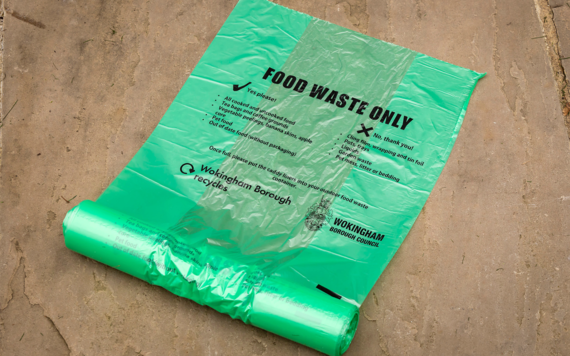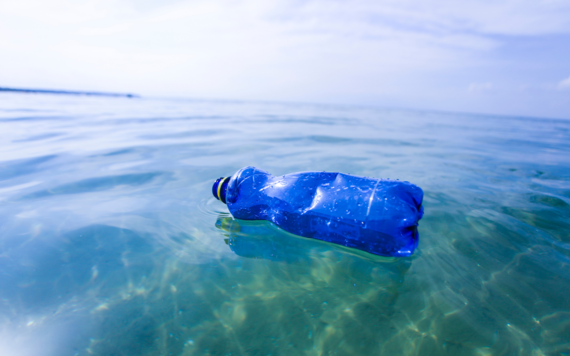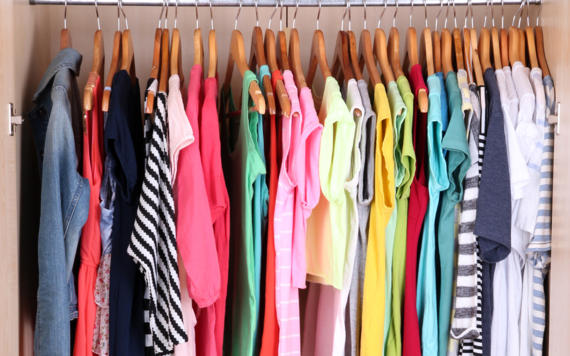 If you run out of food caddy liners
Did you know you don’t need a food waste bag to line your food caddy?
If you run out of food caddy liners, consider using other plastic bags such as cereal liners and bread bags, newspapers, or kitchen towels to line your food caddy. You may also leave it unlined if you prefer.
Food caddy liners are made of non-recyclable single-use plastics which are hazardous to the environment. The disposal of the liners causes greenhouse gas emissions when they are burnt after the food waste inside is taken out for processing at the recycling facility.
 Single-use plastics – a climate change hazard
Single-use plastics, or disposable plastics, are used only once or for a short period of time before they are thrown away or recycled.
According to estimates of the UK government, England uses 1.1 billion single-use plates and 4.25 billion items of single-use cutlery, most of which are plastic, every year, but only 10 per cent are recycled upon disposal.
Single-use plastics cause great harm to the environment if they are littered or discarded incorrectly after use. They often end up in the ocean for centuries and harm marine life.
If plastics are sent to landfill, they break down into tiny toxic particles that contaminate the soil and waterways and enter the food chain. When animals accidentally eat them, there will ultimately be adverse effects on our health.
 Waste less, recycle more – Clothes
Research indicates that around 30 per cent of clothing in wardrobes in the UK has not been worn for at least a year. Furthermore, an estimated £140 million worth (equivalent to the weight of more than 25,000 double-decker buses) of used clothing goes to landfill every year.
The production, use and disposal of clothes result in greenhouse gas emissions, causing a significant environmental impact.
There are ways to reduce the impact clothing has on the environment:
-
Better buying: choose clothes which are better made and able to last. Consider pre-loved clothes from online marketplaces or charity shops
-
Care and Repair: simple care tips like following the care labels in clothes help. Replace a faulty zip for your favourite dress rather than throwing it away
-
Refashion and Upcycle: make a top and skirt out of a dress. Or try making a bag from a jumper
Love Your Clothes website provides lots of tips and guides on how to make the most of the clothes in your wardrobe.
 Clothes donation
If you do not want to sell your old clothes, why not give them a second home through donation?
According to the Charity Retail Association, around £295 million is raised by UK charity shops each year through people’s clothes donations. Clothes donation not only helps other people in need, but also makes a positive difference to our environment.
It diverts waste away from landfill, contributing to the reduction of the UK’s carbon footprint.
If a charity shop cannot sell an item, they will recycle it through a textile recycler. Charity shops can reuse or recycle more than 90 per cent of donated clothing.
Besides the clothing banks in your local area, many high street retailers now accept old clothes. Next time, when you go shopping, drop a bag of your unwanted clothes in their in-store clothing banks.
|